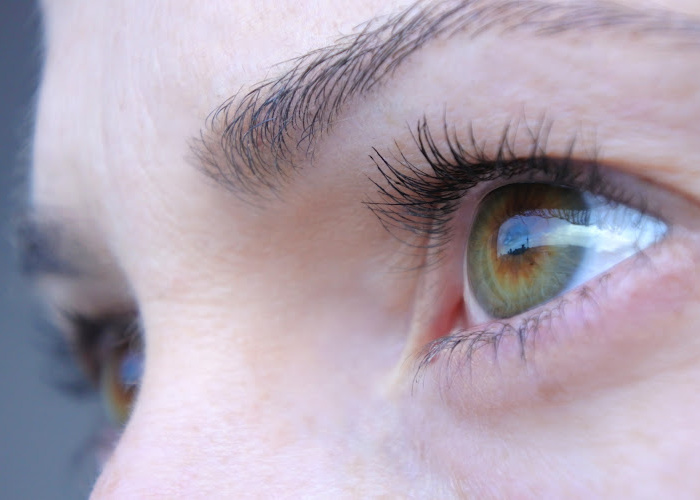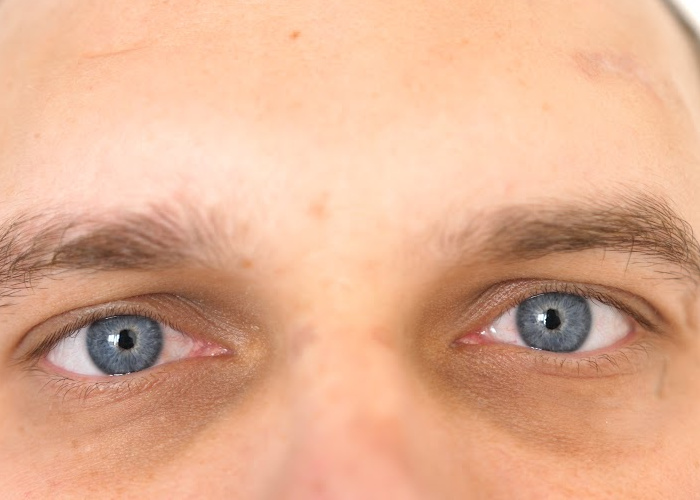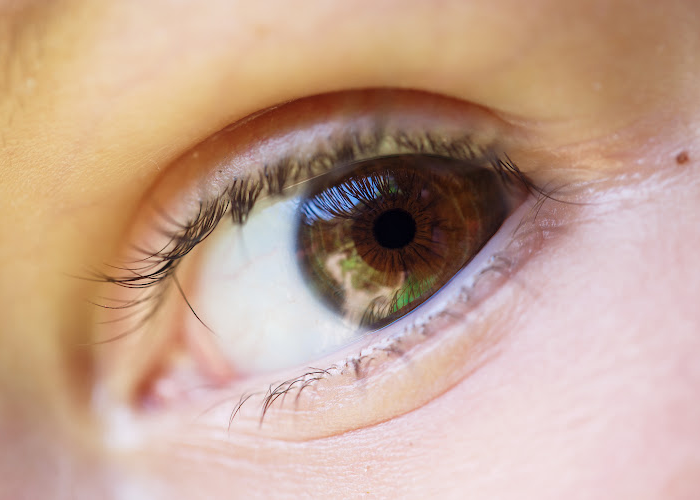It's crucial to know that students with autism and ADHD need special study strategies. Autism…

Autistic Stare: A Detailed Examination of Non-Verbal Cues
The subtle complexities of communication often escape the naked eye, particularly in the intricate realm of nonverbal cues. Among individuals with autism spectrum disorder, an expression often known as the autistic stare emerges as a significant facet of these silent conversations. Far from a mere ‘stare,’ this nonverbal element illuminates the profound reach of neurodivergent traits within the tapestry of human interaction.
Understanding this unique characteristic presents an opportunity to foster connection and insight, contrary to traditional misconceptions. With sensitivity to the nuances of nonverbal communication, observers can discern the myriad ways the autistic stare complicates and enriches the dynamics of social exchange.
This exploration is not just relevant for those on the spectrum; it’s a window into the diverse spectrum of human expression that challenges and expands our collective understanding of autism spectrum disorder and the breadth of neurodivergent traits.

Understanding the Autistic Stare in the Context of Autism Spectrum Disorder
Delving into the autism spectrum disorder, one finds that eye contact challenges and social communication difficulties are not merely about the ability or inability to look someone in the eyes. For those with autism, the ‘autistic stare’ represents a divergence in the way social interaction is perceived and enacted, often leading to misconceptions about their social cognition abilities.
The Role of Eye Contact in Autism
In the realm of typical social norms, eye contact serves as a cornerstone of connection. However, for individuals on the autism spectrum, establishing eye contact can result in sensory overload or discomfort, prompting a departure from what neurotypicals might expect during a conversation. This response stems not from a lack of interest or empathy but from an autistic individual’s unique way of experiencing and interpreting nonverbal cues.
Neurological Underpinnings of Nonverbal Communication
Research delving into the neurological aspects of autism illuminates how different brain regions behave during social interactions. For example, the amygdala a region associated with processing emotions may activate more intensively in autistic individuals when making eye contact. This heightened sensitivity potentially makes direct gaze less appealing, contrary to what the social motivation model hypothesizes for neurotypical individuals.
Interpreting the Autistic Stare: Beyond the Myths
Decoding the autistic stare involves understanding and dispelling myths about autism. Contrary to popular belief, not all autistic individuals avoid eye contact altogether. This diverse group may possess varied social cognitive skills and preferences regarding eye contact. It is thus important to approach nonverbal communication on the autism spectrum with empathy and to recognize the various ways autistic individuals may express themselves beyond stereotypes and generalizations.
Autistic Stare: Decoding the Silence
When it comes to non-speaking autism, the ability to interpret nonverbal cues is of paramount importance. The autistic stare, often perceived as a puzzle to the outside world, serves as a window into the self-expression of those who do not communicate through traditional means. This expression can be one of many nonverbal communication methods utilized by autistic individuals to convey their thoughts and feelings to those around them.
Augmentative and Alternative Communication (AAC) plays a crucial role in enabling nonverbal individuals to interact with their environment. By recognizing the significance of AAC, caregivers and educators open up new avenues for those with non-speaking autism to express themselves. It’s not just about providing tools; it’s about understanding and respecting each individual’s chosen method of communication be it through devices, gestures, or simply their gaze.
- Behavioral expressions as forms of communication
- Integrating AAC in daily interactions
- Respecting individual preferences in nonverbal self-expression
To support those with non-speaking autism, we must look beyond the autistic stare and identify the varied forms of exchange. Whether it’s a picture exchange system, a speech-generating device, or body language, each strategy facilitates a conversation in its unique way. Acknowledging this diversity and providing accessible AAC options is vital for fostering understanding and connection within the autism community.

Conclusion
As we acknowledge the intricate tapestry that makes up human communication, it’s crucial to embrace neurodiversity and the diverse communication styles it births. Delving into the world of autism, we find that the autistic stare is not a quirk to be passively observed but a language to be learned and respected. Autism acceptance is about embracing these nonverbal cues as valid expressions of interaction and selfhood. Implementing adaptive communication strategies can open doors to heightened understanding and communion with those who navigate life on the autism spectrum.
Embracing Neurodivergent Communication Styles
Recognizing neurodivergent needs requires us to reconsider traditional modes of engagement and to validate every form of dialogue, spoken or unspoken. Acknowledging the autistic stare as a meaningful facet of communication allows us to break barriers, build bridges, and foster an environment where everyone can share in the collective human experience. By valuing every individual’s unique means of connection, we embody the very essence of a progressive, understanding society.
Advancing Understanding Through Empathy and Research
Understanding the silent language of autism calls for unwavering empathy in autism alongside a commitment to research on nonverbal cues. It’s through the lens of compassion and the rigor of scientific inquiry that we can dispel misconceptions. This dual approach catalyzes our journey towards a deeper autism understanding, refines our social cognition, and equips us to craft nurturing spaces for individuals across the autism spectrum.
Supporting Autistic Individuals: The Power of Recognition and Adaptation
We strive not merely for tolerance but for active supporting autism through recognition and adaptation. Real support understands the unique needs and preferences of autistic individuals, honoring their communication styles, and reinforcing their right to be heard on their own terms. When we curate environments social, educational, professional that reflect our dedication to inclusivity and acceptance, we enable individuals with autism to navigate life with confidence. Our collective efforts in creating such a world epitomizes the heart of true community spirit.

FAQ
What exactly is the ‘autistic stare’?
The ‘autistic stare’ refers to the particular way individuals on the autism spectrum might engage in eye contact. It can appear as an intense gaze or lack of typical eye contact during social interactions, reflecting differences in nonverbal communication and sensory sensitivity.
Why do some autistic individuals struggle with eye contact?
Many autistic individuals experience discomfort, sensory overload, or even pain during direct eye contact, which is why they might avoid it. This is part of the atypical social communication associated with autism spectrum disorder.
How do neurodivergent traits affect nonverbal communication?
Neurodivergent traits include different ways of processing environmental stimuli, which can impact nonverbal cues like facial expressions, body language, and eye contact. These traits make the typical social signals, such as sustaining eye contact, more challenging.
Is avoiding eye contact always a sign of autism?
Not necessarily. While avoiding eye contact can be characteristic of autism, people might avoid eye contact for a variety of reasons, including social anxiety, sensory sensitivities, or cultural differences. It should not be used as a sole indicator of autism.
Can autistic individuals learn to use eye contact effectively?
With support, some autistic individuals may learn to use eye contact in ways that are more in line with neurotypical expectations, but it’s essential to respect their comfort levels. Forcing eye contact can be stressful, so understanding and acceptance are key.
How can we better interpret the nonverbal cues of someone with autism?
Interpreting nonverbal cues from someone with autism requires patience, understanding, and attention to the individual’s unique communication methods. Observing patterns and listening to auxiliary verbal explanations can help in understanding their expressions beyond the myths.
What is AAC and how does it assist non-speaking autistics?
AAC stands for Augmentative and Alternative Communication, which encompasses methods like gesture, sign language, picture communication boards, and speech-generating devices. These tools offer different ways for non-speaking autistics to communicate their needs and thoughts.
Why is it vital to embrace neurodivergent communication styles?
Embracing neurodivergent communication styles, such as the autistic stare or other unique nonverbal cues, promotes inclusivity and understanding. It respects the natural ways in which autistic individuals interact and express themselves, contributing to their quality of life and social integration.
How can empathy and research improve our understanding of autism?
Empathy allows us to appreciate the lived experiences of autistic individuals, while research provides empirical data to inform better support strategies. Together, they can debunk misconceptions and enhance our overall understanding of autism spectrum disorders.
What can be done to support autistic individuals in social interactions?
To support autistic individuals, we can provide consistent, patient, and adaptive communication strategies. Recognize and accept their unique needs, offer appropriate communication aids, and create environments that allow for comfortable self-expression, thereby promoting positive engagement within the community.



This Post Has 0 Comments